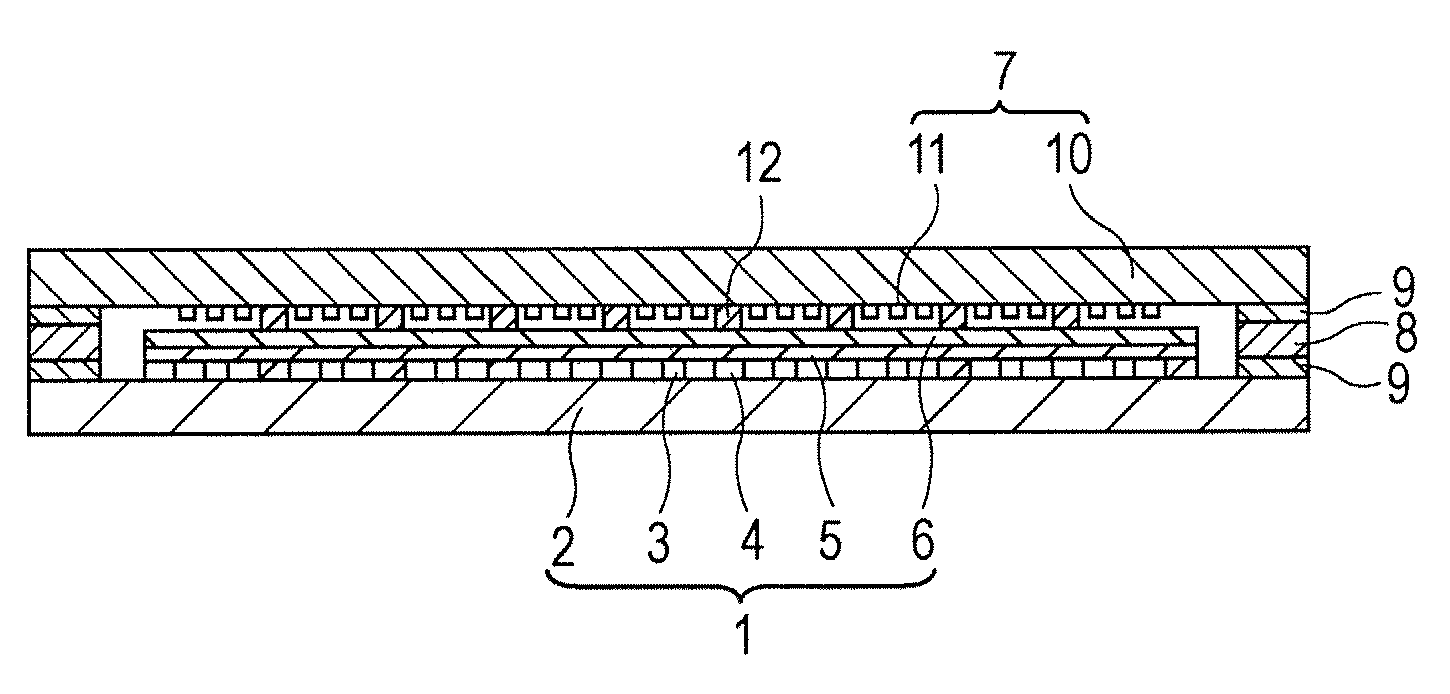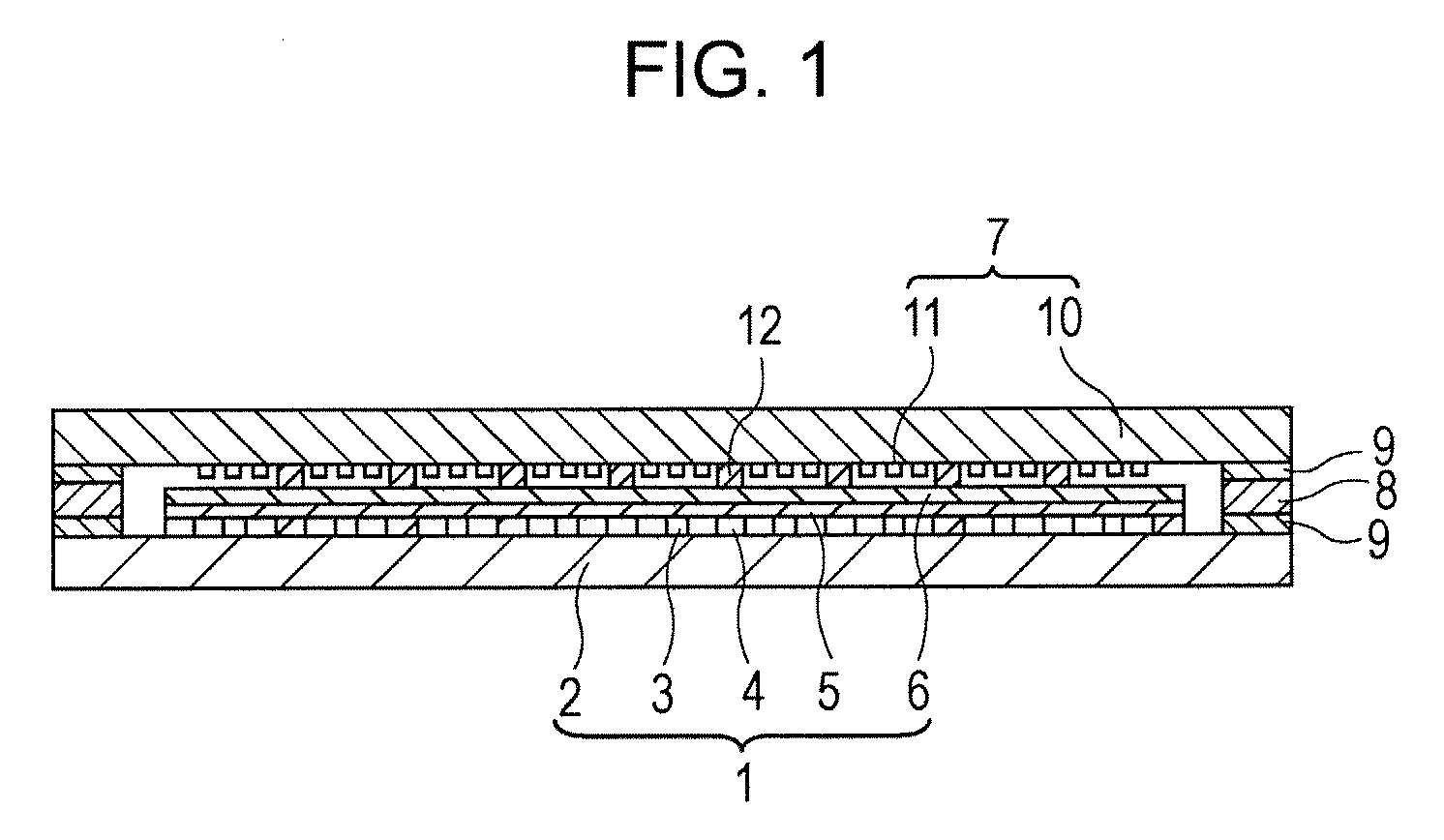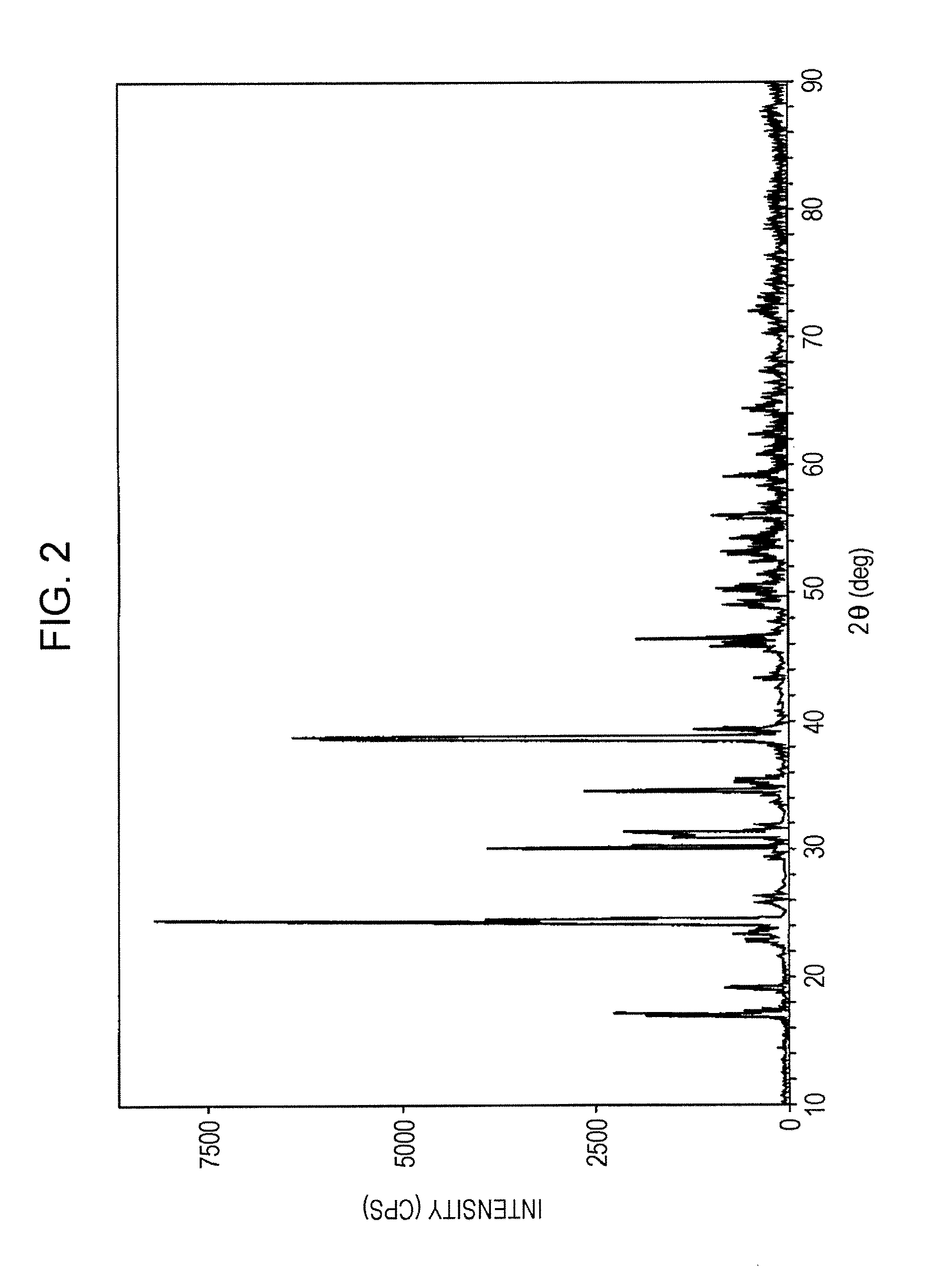Phosphor for Display and Field Emission Display
a field emission display and phosphor technology, applied in the direction of discharge tube luminescent screen, discharge tube/lamp details, luminescent composition, etc., can solve the problem of significantly long excitation time compared to crts, low current density per unit time obtainable by electron beam, shorten the lifetime of phosphor, etc. problem, to achieve the effect of excellent luminous efficiency, long lifetime and high luminan
- Summary
- Abstract
- Description
- Claims
- Application Information
AI Technical Summary
Benefits of technology
Problems solved by technology
Method used
Image
Examples
example 1
[0040]Starting materials containing elements constituting the matrix of the phosphor and the activator or compounds containing such elements were weighed so that the stoichiometric ratio of the composition shown in Table 1 (SrGa2S4:Eu, Eu content being 2 mol %) was achieved, and thoroughly mixed. The resulting phosphor material was filled in a quartz crucible with adequate amounts of sulfur and activated carbon, and fired in a hydrogen sulfide atmosphere. The firing condition was 800° C.×60 min.
[0041]The resulting fired material was washed with water, dried, and sieved to obtain a europium (Eu)-activated strontium thiogallate phosphor (SrGa2S4:Eu) . An XRD (X-ray diffraction) spectrum of the obtained europium-activated strontium thiogallate was measured, and an XRD (X-ray diffraction) pattern shown in FIG. 2 was obtained. No peak was found in the diffraction angle (2θ) range of 27° to 29° in the XRD pattern, which confirmed that the europium-activated strontium thiogallate phosphor ...
example 2
[0047]The europium (Eu)-activated strontium thiogallate phosphor (SrGa2S4:Eu) obtained in Example 1, a known blue light emitting phosphor (ZnS:Ag,Al), and a known red light emitting phosphor (Y2O2S:Eu) were used to form phosphor layers on a glass substrate to thereby form a face plate. The face plate was assembled with a rear plate having many electron emitting elements with a supporting frame, and the gap between the plates was hermetically sealed under vacuuming. It was confirmed that the FED thus produced exhibited excellent color reproducibility including luminance and that satisfactory luminance characteristic was exhibited after 1000 hours of driving under rated operation.
PUM
| Property | Measurement | Unit |
|---|---|---|
| accelerating voltage | aaaaa | aaaaa |
| 2θ | aaaaa | aaaaa |
| excitation voltage | aaaaa | aaaaa |
Abstract
Description
Claims
Application Information
 Login to View More
Login to View More - R&D
- Intellectual Property
- Life Sciences
- Materials
- Tech Scout
- Unparalleled Data Quality
- Higher Quality Content
- 60% Fewer Hallucinations
Browse by: Latest US Patents, China's latest patents, Technical Efficacy Thesaurus, Application Domain, Technology Topic, Popular Technical Reports.
© 2025 PatSnap. All rights reserved.Legal|Privacy policy|Modern Slavery Act Transparency Statement|Sitemap|About US| Contact US: help@patsnap.com



